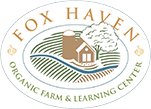Foragers 1, Session 4: Tonics & Violets
By Allie Smith
When I hear the word “tonic” I think of vigor and refreshment and renewed energy, and spring’s verdance and increased sunlight has always tended to serve as its own tonic for me. And sure, as someone who tends to lose the thread amidst seasonal sadness, this course has reminded me of the many ways our surroundings are still thriving even in the winter months. But while I hope to view future winters in a more nuanced way, I still can’t help but feel a thrill at the first yarrow leaves peaking through the soil in my container garden. I can’t help but play favorites with the month of May’s treasures. Because of this fondness, it was a particular joy to quite literally bottle up some of the small delights of spring with Holly Poole-Kavanah, with a focus on also identifying a few plants that might be truly harmful “foes.”
 Our focus foe was poison hemlock, which looks similar to a favorite friend of mine (wild carrot or Queen Anne’s Lace, also shown below). Look for purple dots/splotches on a hollow and hairless stem to keep an eye out for poison hemlock. Fine hairs identify the leaf on the right as wild carrot vs. the poison hemlock (right). The hemlock plant will ultimately grow much taller than the wild carrot too.
Our focus foe was poison hemlock, which looks similar to a favorite friend of mine (wild carrot or Queen Anne’s Lace, also shown below). Look for purple dots/splotches on a hollow and hairless stem to keep an eye out for poison hemlock. Fine hairs identify the leaf on the right as wild carrot vs. the poison hemlock (right). The hemlock plant will ultimately grow much taller than the wild carrot too.
Admittedly, I’m writing this post months later while the days are long and the sunflowers are blooming. My elderflower cutting from a Foragers class moons ago has been transplanted and is producing berries! A benefit of this is that I’ve had plenty of time for the spring tonic we made with Holly to age into a slightly spicy, invigorating treat. It’s really come in handy to have as an aid in the kitchen during a personally taxing time of transition and hot temperatures. I’m struck once again by how lucky our future selves are when we take the time to craft hyper-seasonal plant medicine in the present.
 We all collected our choice of plant material to use in our spring tonics, and I decided to focus largely on wild violet leaves and nettle, with just a bit of chickweed. I gravitated towards nettle as my seasonal allergy companion, and for the challenge of avoiding stings. To wild violet though, I felt an even greater magnetic pull, like always.
We all collected our choice of plant material to use in our spring tonics, and I decided to focus largely on wild violet leaves and nettle, with just a bit of chickweed. I gravitated towards nettle as my seasonal allergy companion, and for the challenge of avoiding stings. To wild violet though, I felt an even greater magnetic pull, like always.
I love everything about violets, and that is in part thanks to feeling comfortable foraging them. They’re prolific in the spring–so plentiful! They’re relatively singular in color–not quite blue, not quite purple…violet! They’re identifiable in shape too, with their heart shaped leaves and sweet, melancholic flower faces pointing downward. I’ve spent the better part of two springs trying to convince my neighbor they’re beautiful, tasty on salads, and not a problem weed. I’ve filled my bakery with violets each April and May. As far as friend or foe plants go, violet is my best pal.
Until this year’s Forager’s session with Holly, I’ve largely focused on violet flowers as garnish and in concentrated syrups. I’ve decked hundreds of violet lemon ricotta cookies in eye-catching blooms, and watched jars of violet syrup turn darker and darker blue over the course of 48 hours infusing on the counter.
 Exploring violet leaf in our spring tonic was therefore a bit of a full circle moment for me. I’ve recently closed the very bakery I filled with violets each spring. That chapter brought me both closer to and further from the natural world as I built a business–partially at least–on the beauty of flowers. But the soothing properties of violet are just as powerful once the flashy not purple/not blue bloom’s time has passed. As I’m relearning how to take better care of myself, it’s the perfect season for this message. I’m slowing down and reconsidering the concept of time and what’s “fleeting.” I’m considering all the parts of plants in a more measured way, and that learning is such a tonic.
Exploring violet leaf in our spring tonic was therefore a bit of a full circle moment for me. I’ve recently closed the very bakery I filled with violets each spring. That chapter brought me both closer to and further from the natural world as I built a business–partially at least–on the beauty of flowers. But the soothing properties of violet are just as powerful once the flashy not purple/not blue bloom’s time has passed. As I’m relearning how to take better care of myself, it’s the perfect season for this message. I’m slowing down and reconsidering the concept of time and what’s “fleeting.” I’m considering all the parts of plants in a more measured way, and that learning is such a tonic.
